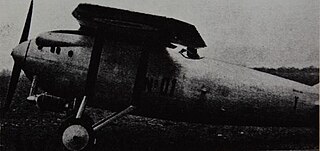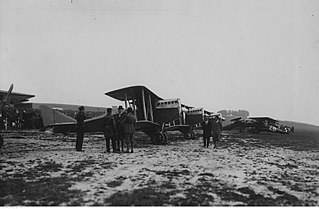Ansaldo is an Italian surname, and can refer to:
- Companies
- Gio. Ansaldo & C., an Italian engineering company founded in 1853, and taken over in 1993 by Finmeccanica (now Leonardo S.p.A.)
- Ansaldo Energia, an Italian engineering company
- Ansaldo STS, an Italian maker of railroad control equipment
- Ansaldo Breda, subsidiary of Finmeccanica, sold in 2015 to Hitachi Rail
- Ansaldo Electric Drives, motor manufacturer of the Fiat Doblò
Ansaldo was one of Italy's oldest and most important engineering companies, existing for 140 years from 1853 to 1993.

Leonardo S.p.A., formerly Leonardo-Finmeccanica and Finmeccanica, is an Italian multinational company specialising in aerospace, defence and security. Headquartered in Rome, the company has 180 sites worldwide. It is the ninth largest defence contractor in the world based on 2016 revenues. The company is partially owned by the Italian government through the Ministry of Economy and Finance, which holds 30.2% of the company's shares and is its largest shareholder.
Ansaldo Energia is an Italian power engineering company. It is based in Genoa, Italy. The absorbed parent company, Gio. Ansaldo & C., started in 1953. It was taken over by Leonardo Spa. In 2011, Leonardo S.p.A. sold 45% stake in Ansaldo Energia to First Reserve Corporation. In 2013, the Fondo Strategico Italiano acquired an 85% share of the company. It then sold a 40% share to Shanghai Electric Corporation.
- People
- Ansaldo Doria (fl. 12th century), Genoese statesman and commander of the noble Doria family
- Ansaldo Poggi (1893-1984), Italian maker of stringed instruments
- Cecilia Ansaldo (born 1949), Ecuadorian professor, writer, and critic
- Giovanni Andrea Ansaldo (1584-1638), Italian painter from Genoa
- Juan Antonio Ansaldo (1910–1958), Spanish aviator and political activist
Ansaldo Doria was a Genoese statesman and commander of the noble Doria family. His father was possibly named Genoaldo.

Ansaldo Poggi was born in Villafontana di Medicina (Bologna), 9 June 1893 and died in Bologna, 4 September 1984. He demonstrated his talent for the making of stringed instruments at a young age. His father, also an artisan, musician and amateur violinmaker, encouraged his son, steering him toward the arts. After the end of World War I he dedicated himself to the profession, taking up the craft again alongside his father while at the same time graduating from the Philharmonic Academy of Bologna. In 1921 he met up with the famous luthier Giuseppe Fiorini, of whom he was an adored disciple. In 1923 he won his first silver medal with a viola at the National Competition in Rome.
Cecilia Ansaldo Briones is an Ecuadorian professor, essayist, and literary critic.
- Cars
- Ansaldo (car), a series of Italian cars produced between 1921 and 1931
- Fiat Ansaldo, an Italian armoured car produced in 1925
- Ansaldo Armored Car (1925), prototype of armored car based on a Pavesi heavy tractor
- Autoblinda Fiat-Ansaldo, armed with a 20 mm Breda 35 autocannon and a turret like the Fiat L6/40
- L3/35, Italian tankette operating since 1929
- Fiat-Ansaldo M13/40, tank designed for the Italian Army at the start of World War II

The Ansaldo was an Italian automobile manufactured by the armaments concern Gio. Ansaldo & C. from 1921 to 1931. The company entered car manufacture with an OHC 1,847 cc (112.7 cu in) inline-four engine model which could develop 36 bhp (27 kW) at 3600 rpm. A sports version with 1,981 cc (120.9 cu in) engine was offered, as was a six-cylinder version of 1991 cc; later six-cylinders were offered with engines of 2179 cc.
The Ansaldo armored car was a prototype built by Ansaldo in 1925, based on a Pavesi heavy tractor.

The Autoblinda 40, 41 and 43 were Italian armoured cars produced by Fiat-Ansaldo and which saw service mainly during World War II. Most autoblinde were armed with a 20 mm Breda 35 autocannon and a coaxial 8 mm machine gun in a turret similar to the one fitted to the Fiat L6/40, and another hull mounted rear-facing 8 mm machine gun.
- Aircraft
- Fiat-Ansaldo A.S.1, basic light touring aircraft developed in Italy in the late 1920s.
- Ansaldo A.1 Balilla, Italy's only domestically-designed fighter aircraft of World War I
- Ansaldo SVA, family of Italian reconnaissance biplane aircraft of World War I
- Ansaldo AC.2, 112 single-seat fighter aircraft of the 1920s, bought by Italy
- Italian aircraft manufactured by the Ansaldo company

The Ansaldo A.1, nicknamed "Balilla" after the Genoan folk-hero, was Italy's only domestically-designed fighter aircraft of World War I to be produced in Italy. Arriving too late to see any real action, it was however used by both Poland and the Soviet Union in the Polish-Soviet War.

The Ansaldo SVA was a family of Italian reconnaissance biplane aircraft of World War I and the decade after. Originally conceived as a fighter, the SVA was found inadequate for that role. Nevertheless, its impressive speed, range and operational ceiling, with its top speed making it one of the fastest of all Allied combat aircraft in World War I, gave it the right properties to be an excellent reconnaissance aircraft and even light bomber. Production of the aircraft continued well after the war, the final examples were delivered during 1918.

The Dewoitine D.1 was a French single-seat fighter aircraft of the 1920s, built by the French industrial company Dewoitine.
- Railway Engineering
- AnsaldoBreda Driverless Metro, driverless electric train related and signaling system
- West Midlands Metro rolling stock, passenger light rail line in the West Midlands conurbation in England

The Hitachi Rail Italy Driverless Metro is a class of driverless electric multiple units and corresponding signaling system. Manufactured by Hitachi Rail Italy and Ansaldo STS in Italy, it is or will be used on the Copenhagen Metro, Princess Nora bint Abdul Rahman University, the Brescia Metro, the Thessaloniki Metro, Line 5 of the Milan Metro, Line C of the Rome Metro and the Yellow Line of the Taipei Rapid Transit System. The first system to use this class of driverless electric multiple units was the Copenhagen Metro which opened in 2002.
The West Midlands Metro is a passenger light rail line in the West Midlands conurbation in England, which opened in 1999. Its rolling stock consists of 21 Urbos 3 trams which came into service in 2014/15, replacing the older T-69 trams which had operated the line since 1999.








